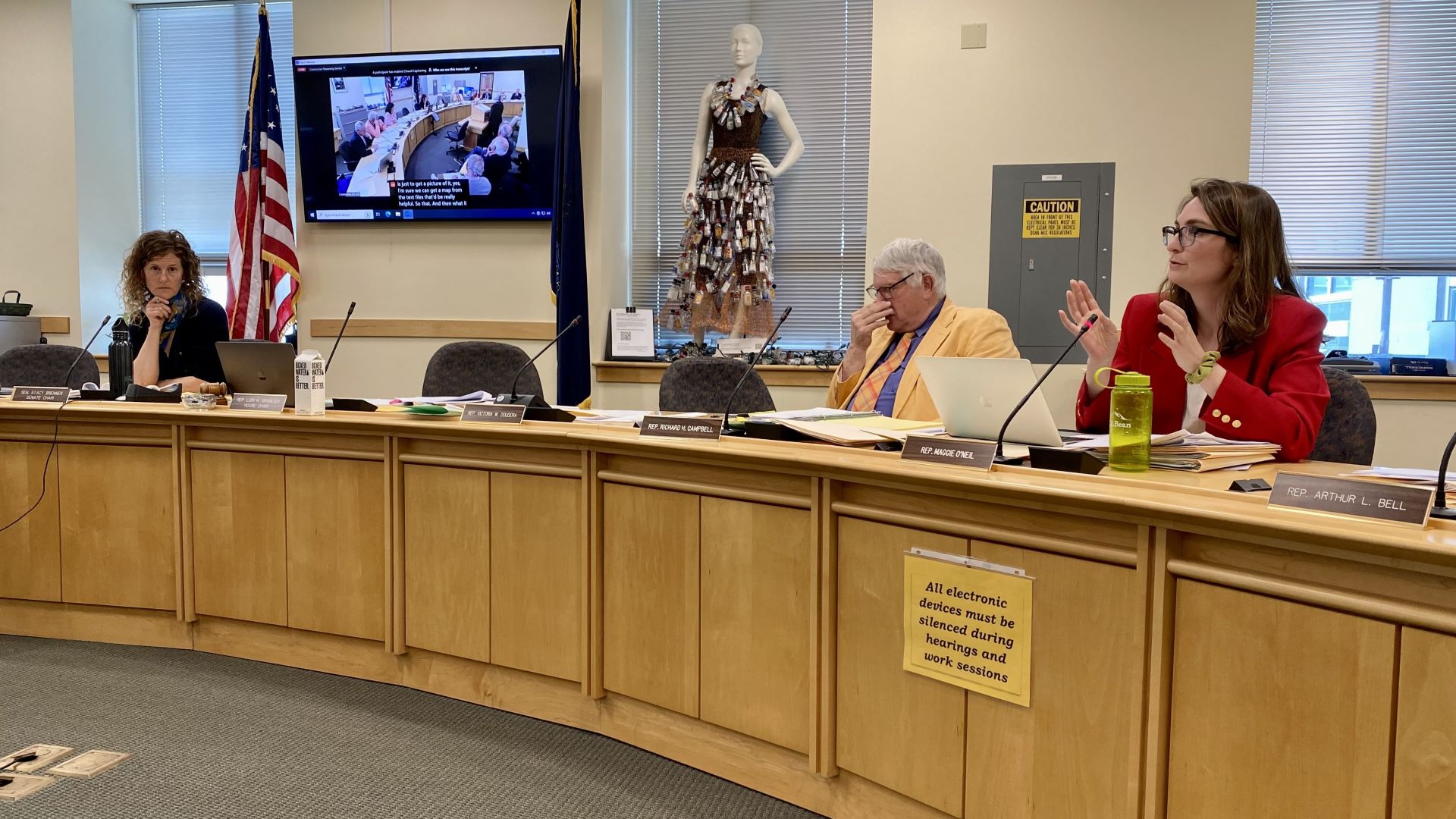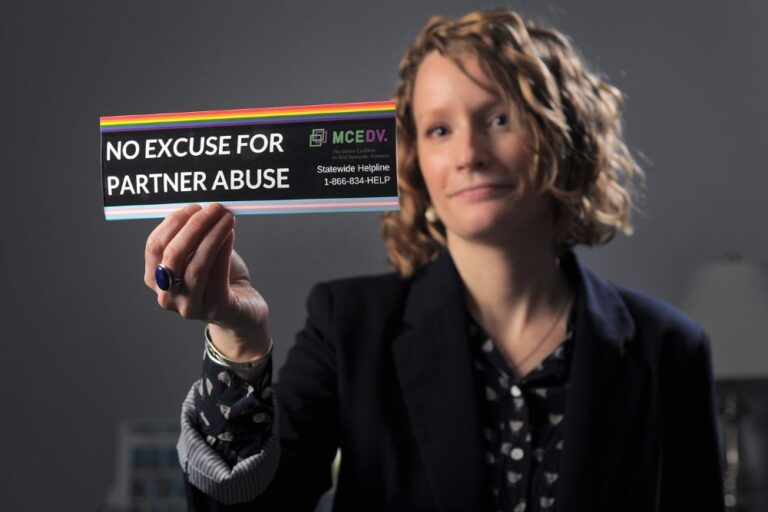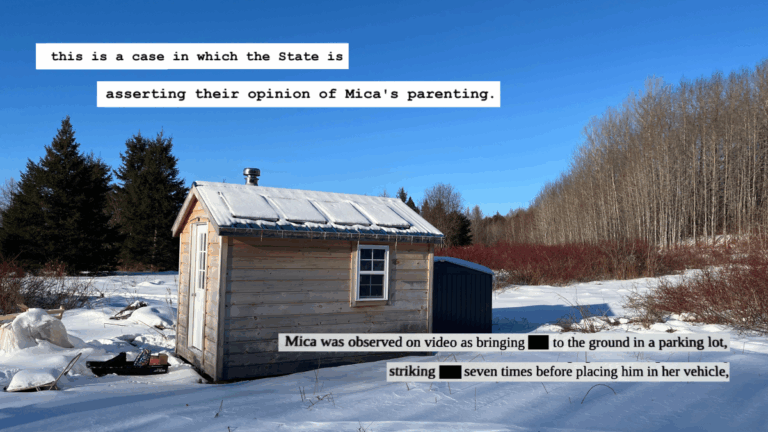A bill prompted by the discovery of a world-class lithium deposit in Newry would dramatically change Maine law to allow mining of metals in open pits of any size, with up to 100 acres actively mined at any time.
Developers would have to prove they won’t generate acid mine drainage or harm water before mining begins.
The bill, backed by the Maine Department of Environmental Protection, would significantly relax current law that limits open-pit metal mines to three acres. Allowing larger open pit mines would also crack open the door to extracting the lithium deposit in Newry, said Melanie Loyzim, the state DEP commissioner, while retaining protections embedded in the state’s strict mining law.
The change could also allow for mining of other metals deemed critical for the transition to renewable energy, such as the manganese deposits straddling the Canadian border in Aroostook County, which are thought to be the largest in the country. But it’s unlikely they’ll ever be extracted under current law because of the three-acre open pit size limit.
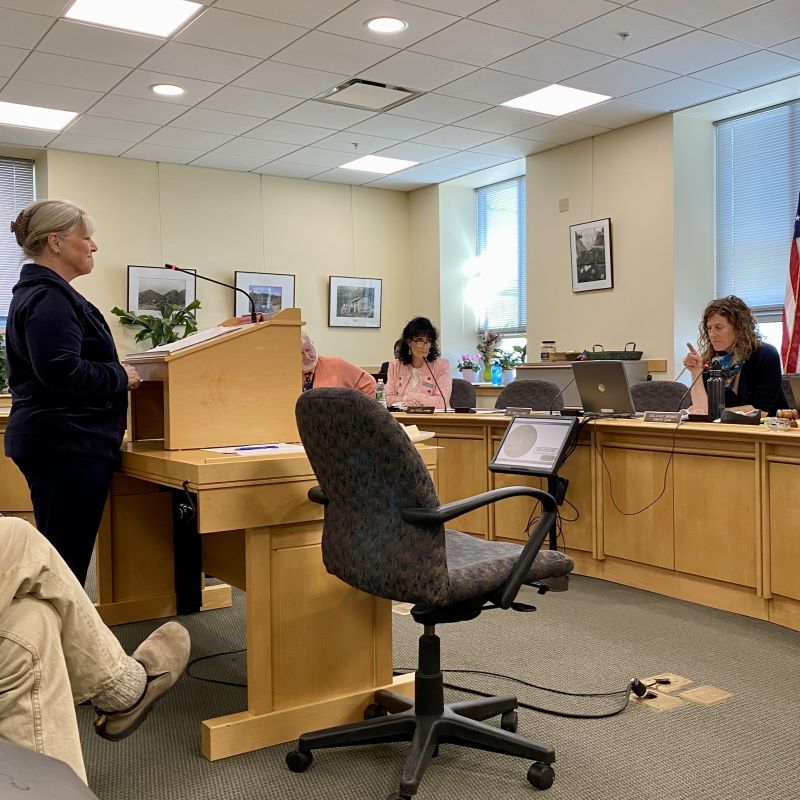
Mary and Gary Freeman, who own the lithium deposit in Newry, have fought for more than a year for the right to dig it out. Initial testing of the already exposed crystals indicates they are rare and high-quality enough to be suitable for making the type of glass used in scientific instruments and computer screens.
It’s possible but unlikely it would be used for batteries, said Mary Freeman, because the crystals are higher quality than what’s necessary for battery construction.
Geologists have speculated that the size of the deposit could be worth more than $1 billion, although more digging is needed to be sure.
“The purity and the size of the crystals are what make it unique,” Mary Freeman told lawmakers at a hearing on April 13.
Several conservation groups support the bill, although the Natural Resources Council of Maine would like to see the open-pit cap lowered to 10 acres at any one time. But others are opposed to any changes that would relax the state’s strict mining laws.
“People are united from the left, the right — they don’t want mines in the state of Maine,” said Bill Pluecker, a state representative from Warren, where a Canadian company expressed interest in mining for nickel and other metals. “They don’t want metallic mines, and they’re worried about the slippery slope that opens up when you start letting in lithium mining.”
RELATED: Canadian company looks for metals in the midcoast
Maine DEP staffers who helped draft the legislation debated whether lifting the acreage limit was appropriate, said Loyzim, but ultimately decided that if the mine waste being generated is “totally inert, we would not be concerned about the size.” Applicants would be required to conduct extensive characterization studies of any areas they want to mine to prove that the rocks won’t generate harmful drainage.
The legislation supported by DEP is one of the seven mining-related proposals before the Environment and Natural Resources Committee, which heard a marathon five hours of testimony on them last week. The bills offer a range of options, from a five-year moratorium on lithium mining to a proposal that would exempt the type of minerals found in Newry from the law altogether.
The Freemans, who own the Newry deposit, are opposed to DEP’s proposal and are advocating for two bills that would change the definition of “metallic mineral” to exempt the class of minerals from the mining law, instead categorizing them under the state’s quarrying rules, which are far less strict.
Last week, Mary Freeman brought a sparkling piece of the clear and white lithium-bearing crystal to the hearing room, placing it on the podium beside her while answering lawmakers’ questions. She carried it from home to give the committee a chance to see just what they were talking about regulating.
Excavating the type of rocks found in Newry would not pose the same environmental hazards as those the mining law was intended to regulate, Freeman told lawmakers, and should be treated similar to quarrying for granite or limestone. Limestone contains metals but is not considered a metallic mineral, in part because lawmakers took into account the state’s long history of limestone quarrying when drafting the law in 2017.
“Our proposal to develop a 5-to-10 acre quarry to excavate this spodumene would be indistinguishable in appearance and environmental impact from the limestone and granite quarries that exist throughout Maine,” Freeman said.
Myles Felch, a geologist and curator at the Maine Mineral and Gem Museum, told lawmakers that the state has experience quarrying for spodumene, the mineral that contains the lithium, without disastrous environmental consequences. In the mid-1900s, 250 tons of the multicolored crystals were taken out of Newry, said Felch, alongside the tourmaline and other minerals for which the area is known.
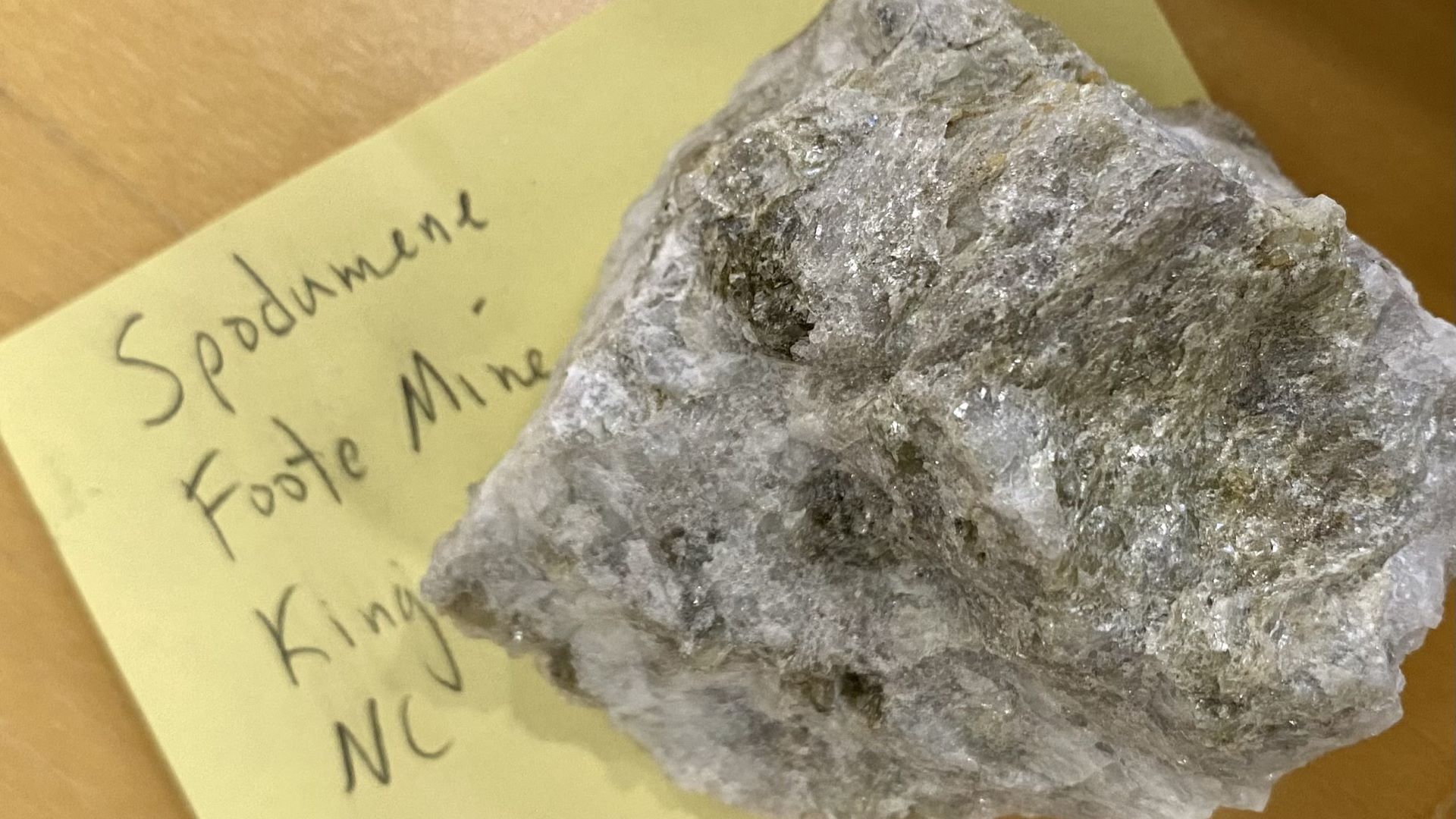
Several geologists and the DEP agreed with the Freemans that spodumene would not pose the same risks as mining for metals such as silver or copper. Those metals are typically found in bands of rock alongside iron sulfides, compounds that generate acid mine drainage when exposed to air and water.
But some warned against changing the definition of metallic mineral, which could “have unintended consequences for not only other critical mineral deposits in Maine that we are aware of but others that are as yet undiscovered,” said John Slack, a scientist emeritus with the U.S. Geological Survey.
Environmental advocacy organizations and some lawmakers also caution against drastic changes.
Pete Didisheim of the Natural Resources Council of Maine said the organization supports the DEP-backed bill but would like to see the cap dropped from 100 to 10 acres being mined at any one time, and urged lawmakers to consider that there are other domestic and international sources of lithium while they weigh the options.
RELATED: A look at the bills to amend mineral mining laws
If the DEP-backed bill passes, the Freemans could apply to extract the lithium under Maine mining law, a costly, years-long process. Although companies have begun exploring mining in Maine in recent years, none has formally applied for a DEP permit since the law was passed in 2017.
If lawmakers choose instead to amend the definition of metallic mineral, the Freemans could apply for a quarry permit. Quarries are still regulated; applicants must prove they will protect water quality and habitat, and provide financial assurance to the state that they can clean up after the operation is closed. But it’s a much simpler, less stringent process.
Lawmakers gave little indication of how they were leaning, but the proposal to lift the acreage cap on open-pit mining did raise eyebrows from one committee member, Rep. Vicki Doudera of Camden, who said she thought three acres was “big enough.” Some committee members seemed to struggle with the nuances of the science, and requested that several scientists join them at a work session to learn more.
The Freemans have filed two lawsuits against the DEP, asserting that the mineral spodumene does not meet the state’s definition of “metallic mineral.” The couple has put those suits on hold while waiting to see if the Legislature resolves the issue.
DEP bill “not perfect”
Loyzim, the DEP commissioner, acknowledged last week that its bill “isn’t perfect” because it doesn’t solve the issue of what the state considers a metallic mineral. When the law was passed, citizens and lawmakers were primarily focused on making sure future mines didn’t contaminate groundwater or leave piles of dangerous waste, and there was little discussion of the actual definition of the term, which is more policy than science.
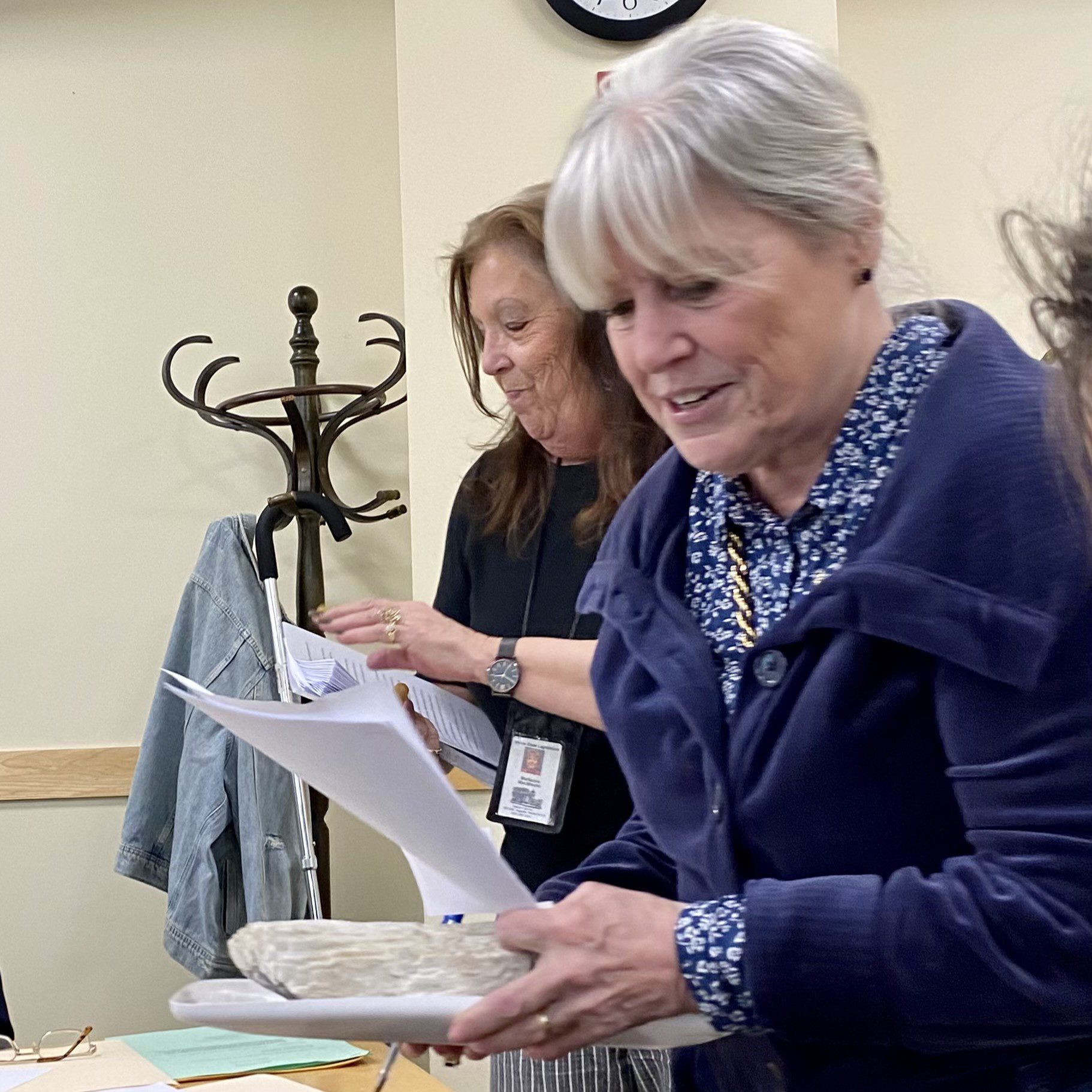
There are minerals — solid compounds with predictable chemical structures (rocks are made of one or more minerals). Then there are metals, such as lithium and gold, that are in their purest form and cannot be broken down any further. Minerals can contain metals (in this case, the mineral spodumene contains the metal lithium) but “metallic mineral” is a policy definition, not a scientific one, focused on the end product of a mining operation rather than a material as it occurs in the ground.
Under current law, whether a material is considered a metallic mineral depends on whether it will be used for industrial or commercial purposes. That makes it hard for DEP staff to decide whether the law applies based on how a deposit might be used.
“It’s very hard for us as regulators in Maine to regulate something based on any potential use of that mineral, if it’s not occurring in the state, and it’s shipped out of state or shipped out of the country,” said Loyzim. “We have no idea what happens to it.”
In the case of the Newry deposit, the crystals would be hand-sorted in Maine, then sold to glassmaking customers or distributors out of state. The Freemans, who have permission from the DEP to conduct exploratory mining in the area, are testing this process.
The rocks would be blasted and large chunks taken by truck to a nearby quarry in Maine already regulated by DEP. From there the material would be brought to a building where workers would sort individual pieces by hand. Those would then be sold for further crushing and refinement to distributors out of state. “There would be no chemical processing” in Maine, said Freeman.
RELATED: State complicates couple’s hopes to mine lithium
Dealing with ore once it’s out of the ground can be one of the dirtiest, most dangerous parts of any metal mining operation, requiring companies to ensure the waste is covered and properly contained so it doesn’t leach into groundwater or soil.
The world is “riddled with mining operations that have gone awry,” said Didishiem. Once it’s begun, acid mine drainage can be extremely difficult to stop, turning waters a sickly shade of orange and polluting watersheds for decades or longer. But mining advocates say Maine’s regulations are designed to prevent the kind of disasters the state saw in the Callahan mine in Blue Hill, a Superfund site that is millions of dollars into a decades-long cleanup process.
“I think one of the problems from the general public in the U.S. and elsewhere in the world is a view of old mines that were developed when the extraction was done before environmental regulations were enacted,” said Slack, the geologist. “We’re doing a lot better than we did many decades ago.”
Kate Cough reports on climate change and the environment for The Maine Monitor. Reach her by email with story ideas: gro.r1751757691otino1751757691menia1751757691meht@1751757691etak1751757691.


